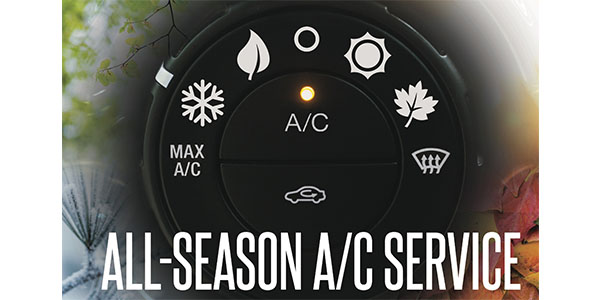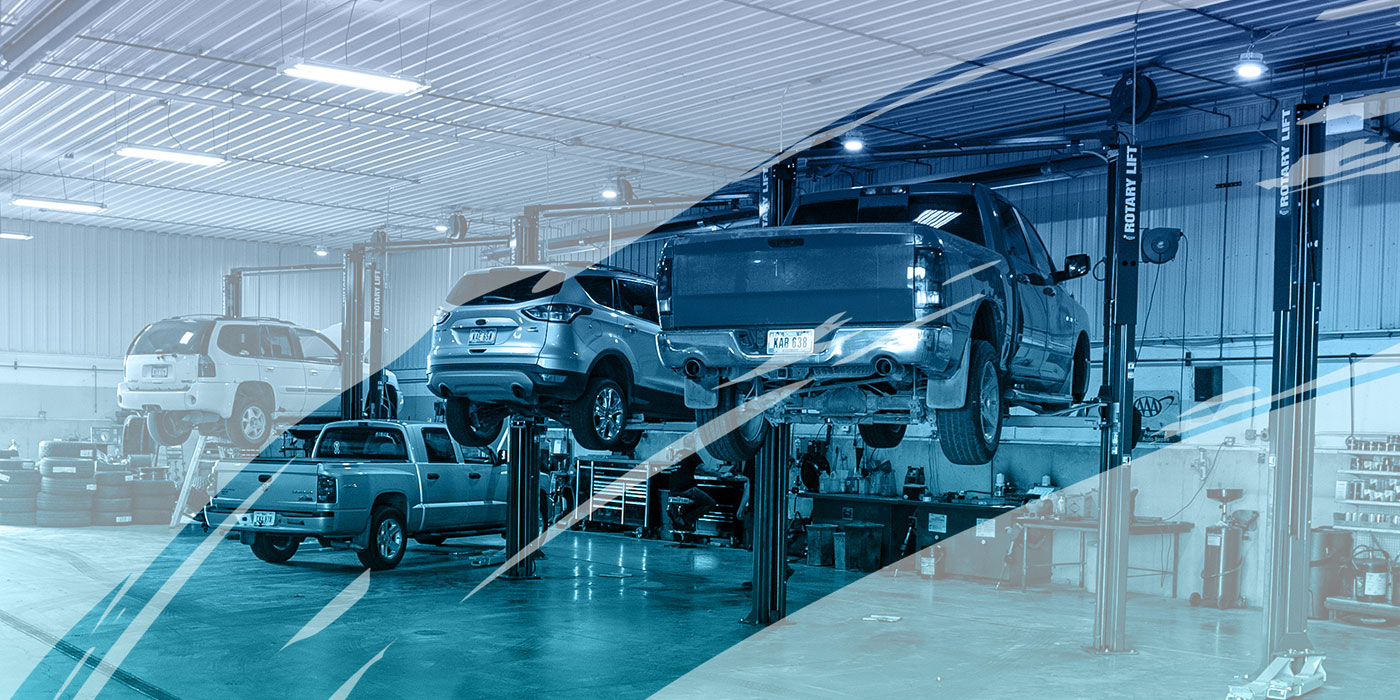We all know exactly what will happen on that first hot day of the year. Your shop will be flooded with customers whose A/C is not cool enough.
To avoid this and even out the workflow, A/C maintenance during the colder months can be a huge benefit for you and your customers. A big part of our job as technicians involves educating our customers to understand proper maintenance of their vehicles, and A/C maintenance is a topic most of them are not familiar with.
It usually gets their attention when you tell them it’s important to make sure their A/C is working in the middle of the winter and that opens the door for you to sell them service. Here’s a look at the reasons why.
1 – Cabin Filters
Most vehicles have them and they get overlooked often. Any restriction in the cabin filter reduces the efficiency of the climate control system, places a greater load on the blower motor and can allow odor buildup in the interior.
In addition, if they are severely neglected or if a rodent makes a home on one, leaves and debris can work their way into the heater box. Inside are a number of doors, passageways and seals, along with the heater core and A/C evaporator, and even slight buildup on components or wear on the seals can degrade the performance of a system.
Tools for the job: Cordless screwdrivers to remove interior panels for access, bright lights for inspection and a shop-vac should be used to vacuum out debris that is found in the heater box or falls in when removing the cabin filter. Do not use a blowgun to remove leaves and debris. While some of it may blow out, much of it will just be forced further into the system. Odor-eliminating treatments are also a great “tool” and upsell to the customer.
2 – The Defroster
When the A/C system is working properly, the defroster removes moisture from the air. When defrost is selected, the A/C compressor is commanded on and inside the heater box the air is directed across the evaporator to remove moisture. This is critical to keep the defroster working efficiently.
A functional check of the A/C system operation, which includes inspecting for leaks, making sure the radiator/condenser fan is working properly and checking A/C system operating pressures is the only way to ensure that it is working properly.
Tools for the job: A/C manifold gauges, electronic leak detectors and ultraviolet lights to inspect for the presence of dye are all tools that can help you determine the overall health of a system. Refrigerant identifiers and A/C recovery and charging machines are necessary when opening a system and a vacuum pump is required prior to recharging.
3 – The Compressor
Although the benefits of A/C operation were the same, in the days of multiple V-belts, compressors were primarily driven by their own belt and if they went bad, the budget-minded customer would commonly just leave the belt off. With the vast majority of vehicles today having only one belt, the compressor is a component that must be in good operating condition to prevent a breakdown and a costly repair. In most cases, there is no option to bypass or eliminate the compressor. Replacing a compressor requires that you flush the entire system and replace the expansion valve and receiver drier — a very time-consuming process.
Ensuring proper compressor operation requires a functional check of the A/C system to make sure it is operating with the correct charge of refrigerant. The refrigerant carries the oil along with it as it passes through the system, so an incorrect charge will adversely effect the lubrication and life of the compressor.
Don’t forget to check the compressor drive belt and tensioner pulleys either.
Tools for the job: A/C manifold gauges, electronic leak detectors and ultraviolet lights to inspect for the presence of dye are all tools that can help you determine the overall health of a system. Refrigerant identifiers and A/C recovery and charging machines are necessary when opening a system, and a vacuum pump is required prior to recharging. If you’re replacing the compressor, you’ll also need the proper flushing equipment and solvents.
4 – The Receiver/Drier
Often overlooked, the receiver/drier contains a desiccant, which removes moisture from the refrigerant. Properly evacuating a system during service removes the majority of the moisture and the receiver/drier is designed to remove any that remains. This component should be thought of as a regular replacement part. The desiccant inside can and will break down over time, contaminating the entire system and causing compressor failure. Don’t hesitate to recommend replacement on any receiver/drier that is over a few years old.
Tools for the job: Refrigerant identifiers and A/C recovery and charging machines are necessary when opening a system, and a vacuum pump is required prior to recharging.
5 – The Condenser
The condenser takes more abuse than any other component. It catches everything on the road and quickly begins to build up dirt and debris in the fins, especially around the edges and corners. It should be blown clean on a regular basis along with the radiator, have any distorted fins straightened and you should inspect all related shrouds and seals to make sure air is being properly directed across it.
Tools for the job: Special extended blow guns with multiple outlets are available, allowing you to insert them down between the radiator and condenser and effectively blow out all contaminants, and fin straightening combs are designed to do exactly what they say.
6 – The Drain
All A/C boxes have a drain, allowing the moisture that is removed from the air to drip out the bottom. It is very common for these to get plugged up, especially in the winter. If the water is not able to drain, effectiveness of the defroster will decrease and the components inside the heater box will begin to rust or corrode. Be sure all drain hoses and exits are free of debris and able to open properly.
Finishing touches for proper A/C maintenance include new valve cores if any are found to leak and new valve caps to replace any missing ones. As always, don’t forget your PPE when working on any A/C system.
If you find a system that is low on refrigerant, in some cases you may not be able to pinpoint the leak right away and adding leak dye for a future inspection may be the direction you need to take. You are better off working through these types of problems when the customer does not need their A/C rather than waiting until they do, saving them a lot of frustration.
Equipping yourself for A/C service year-round will be profitable, and educating your customers about it is well worth the time.














